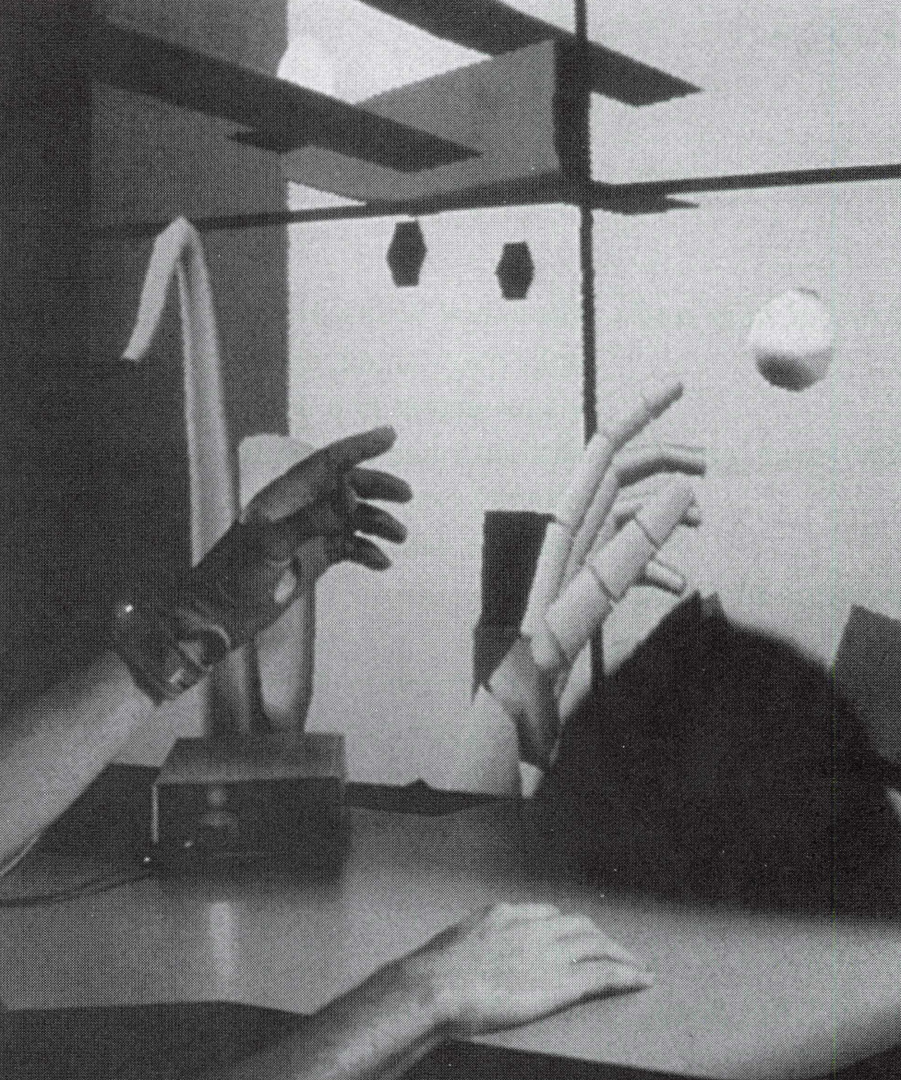“Design Space” by Chapin
Conference:
- SIGGRAPH 1993
-
More from SIGGRAPH 1993:


Type(s):
Entry Number: 17
Title:
- Design Space
Program Title:
- Designing Technology
Presenter(s):
Collaborator(s):
Project Affiliation:
- Stanford University
Description:
Design Space: An Exhibit of Developing Technologies for Design
Design Space exhibits an interpretation of future design media drawn from work at Stanford University’s Center for Design Research (CDR) that facilitates collaborative design between remote stations through a shared virtual space. CDR was founded in 1983 as an industrial-academic collaboration and interdisciplinary R&D center to improve the engineering and product design process. The CDR accepts design problems from industry and confronts them with creative design teams for the purpose of design process observation and study, experimental design practice, and new design tool development. A long-term CDR goal is to aid the design process so that creativity, reuse of design knowledge, and human skill are not impeded by problem complexity. While modern design tools commonly use computer-assisted project scaling (do one by hand; do n by computer), computer interfaces often interfere with the designer’s creative flow of thought and manual skills. At CDR, researchers and designers collaborate on projects to develop devices and interfaces to better map manual skills to data operations, experiment with alternative means of design knowledge storage and retrieval, and investigate design tool effectiveness. DesignSpace encapsulates some of these developing technologies into a conceptual design environment.
At each Design Space station, designers work in a physical studio environment, but with a large projection window into the shared virtual 3D space. The “semi-immersive” aural, visual, and dexterous interaction within the virtual environment frees the user to work in both the physical and virtual design spaces. Hand and wrist instrumentation empowers each DesignSpace designer with system control, manual communication with collaborating designers, and use of dexterous design skills. Users may use dexterous interaction to compose spatialized MIDI music, create colorful 3D designs, communicate in a manual language, and modify the design environment, in addition to issuing pre-trained, macro-type system commands using hand gestures. Linked stations locally maintain the environment and bidirectionally share their designer’s uniquely-mapped interactions. Evolving from traditional CAD tools, DesignSpace does not require the designer to channel design interaction through a command interface, and attempts to put creativity back in the hands of the designer. Unlike “immersive” virtual environment systems, DesignSpace does not limit designers from using familiar physical design tools. Design Space brings computer design media into the design studio, much like paper or clay may lie on a table, while extending the experience to remote collaborators.
Several CDR projects form the basis for DesignSpace: Talking Glove (Kramer and Leifer) an instrumented glove and recognition algorithm for dynamically mapping human hand poses into a digital command stream, Cut Plane (Edwards, Kessler, and Leifer) a 3D CAD workstation inter- action concept, Virtual Hand (Chapin and Kramer) a dynamic hand model driven by the instrumented glove developed for Talking Glove, TeleSign (Chapin, Kramer, Macken, Haas, and Leifer), a collaborative design effort between CDR and the Center for the Study of Language and Information, leveraged from the TalkingGlove and Virtual Hand projects to develop a locally maintained, shared virtual environment for visual expression and manual communication, without video bandwidth. DesignSpace is a joint effort to promote creative, collaborative computer assisted design.





